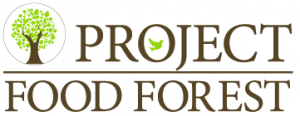Payback Time
Okay, I confess. I am not going to whack anyone. The title is a just a hook to get you to read this article on the payback (return on investment) for food forests. I was moved to write it when someone suggested that it would be better to use donations to buy food for the needy rather than use it to build food forests. Wrong, wrong and wrong!
Don’t misunderstand me, agencies that feed the hungry need donations to continue their work and I encourage people to donate. But donating to build a food forest has a better long-term payback. Let’s do the numbers using a $100 donation.
First, let’s level the playing field so our comparison is valid. We will assume that our $100 donation will go to buy food for the hungry or will buy trees for the food forest – not to operating expenses. In the case of Project Food Forest, our supplies and labor to build food forests are donated. Let’s assume that food agencies also get volunteer labor and donations for operating expenses so we can focus on the payback for the actual donation. We will look at the results over 4 years since it takes a few years to establish a food forest.
So, what will $100 buy for a food forest. A quick search on the internet shows that $100 will buy about 5 dwarf apple trees. There will be expenses to plant, mulch and water the trees which will be provided by volunteers and our partners. There will not be any money spent on fertilizers or pest control chemicals – we will use low cost, proven chemical-free, permaculture methods in the food forest.
We are assuming that a $100 donation to a food agency will by $100 worth of food. The agency will buy the food and distribute it to the needy. So for Year 1, the donation to buy food looks good – it has a payback of $100 in food distributed to the needy. The food forest has five apple trees but no food produced.
In years two and three, the food agency has the advantage in total payback since it distributed $100 of food in year one. The food forest does not have a payback because the trees have not yet started to bear fruit.
Another internet search shows that dwarf apple trees start to bear fruit in 2-4 years. So in year four, our five trees should be bearing fruit. The same search says they will bear 3-6 bushels of apples per tree weighing 42 pounds per bushel. So let’s be conservative and say that only 4 of our trees survived and they produced 4 bushels of apples. The math: 4 trees x 4 bushels x 42 lbs = 672 pounds of apples. The average price of Red Delicious apples in 2016 was $1.31 according to USDA data. Our 672 pounds of apples are worth $880!
Now the scorecard reads like this:
Initial Investment Total Payback
Food Forest $100 $880
Food Agency $100 $100
If the 672 pounds of apples are donated to an agency that feeds the hungry that agency will not have to spend $880 to buy that food. A Win/Win.
I know there are a lot of ways to calculate return on investment and to play with the numbers. I used conservative estimates for this example to show that a good return on investment is possible under real-world conditions. I cut the comparison off at four years. The trees, however, will bear fruit for many years so the return on the initial investment continues to grow as long as the trees survive.
This example is simply an illustration of the proverb “Give a man a fish and he will eat for a day; teach a man to fish and he will eat for a lifetime”. By building food forests on under-utilized land using sustainable, permaculture techniques we will provide stable food sources for people in our community. The neighbors to a food forest will not only be able to use some of the food themselves but they will also have pride in knowing that their community cares about helping others.
This post is by Boyd McPeek, Project Food Forest board member.
Photo by Holly Mindrup.



